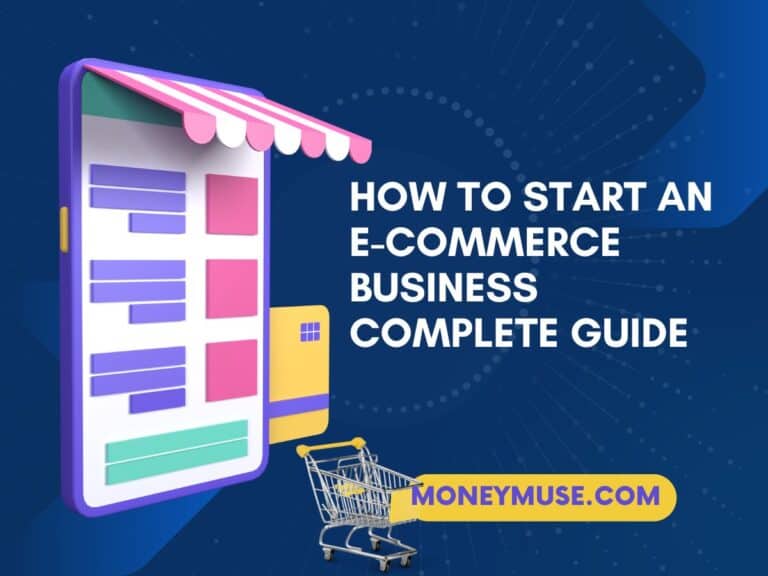eCommerce Growth: A Comprehensive Guide to Supercharge it with Social Media
A comprehensive guide on how to supercharge eCommerce growth with social media! If you’re an eCommerce business owner or marketer, you already know how important it is to keep up with the latest trends and strategies to stay ahead of the competition. And with more and more consumers turning to social media to discover research, and purchase products, you must understand the role these platforms can play in driving growth for your business.
But what exactly is eCommerce growth? Simply put, eCommerce growth refers to increased sales and revenue for an online business. It’s expanding your customer base, improving engagement, and increasing customer loyalty. And with the rise of technology and the increasing convenience of online shopping, it’s becoming increasingly crucial for businesses to prioritize e-commerce growth.
So, why is social media such an essential tool for e-commerce growth? The answer is simple: social media is where your customers are. With billions of active users on platforms like Facebook, Instagram, and Pinterest, businesses have access to a massive audience of potential customers. By leveraging the power of social media, you can drive more traffic to your website, increase brand awareness, and ultimately boost sales and revenue.
This comprehensive guide aims to provide you with a deep dive into social media and e-commerce. We’ll cover everything from social media marketing to advanced strategies for driving e-commerce growth through these platforms. Whether you’re just starting out or looking to take your social media game to the next level, this guide is the ultimate resource for e-commerce growth through social media. So, buckle up, and let’s get started!

Understanding the basics of social media and e-commerce
First of all, what is social media? Social media refers to the various online platforms and communities that allow users to share content, communicate with one another, and participate in multiple forms of social interaction. Some of the most popular social media platforms include Facebook, Instagram, Twitter, Pinterest, and TikTok, to name just a few.
So, how is social media impacting e-commerce growth? The simple answer is that social media is changing the way people shop. Gone are when customers had to rely on brick-and-mortar stores or basic online shopping websites to find products. Now, they can browse products, read reviews, and connect with brands directly through social media. This has created a new landscape for e-commerce, allowing businesses to reach and engage with customers innovatively.
But with so many social media platforms, which is best for business owners? The answer depends on your target audience and the products you sell. For example, if you sell fashion or beauty products, Instagram is the best platform for your business. On the other hand, if you sell home goods or furniture, Pinterest is your ideal platform. It’s best to research, test different platforms, and find the best ones for your business.
Finally, let’s discuss social media’s role in the customer journey. In today’s digital age, social media significantly influences how customers discover, research, and purchase products. From browsing products on Instagram to reading reviews on Facebook, social media platforms can hugely impact the customer journey. By leveraging the power of social media, businesses can build brand awareness, drive traffic to their website, and ultimately increase sales and revenue.

Creating a social media strategy for eCommerce growth
Creating a growth strategy for your e-commerce business is crucial to your success. With a clear plan, it can be easier to effectively leverage social media and drive growth for your business. So, let’s take a closer look at how you can create a growth strategy that works for you. The first step in creating a growth strategy is understanding your target audience. Who are your customers, and what are their needs and interests?
What are their pain points, and how can your products or services help to solve those problems? By understanding your target audience, you can create content and campaigns that resonate with them and drive engagement. Next, you need to define your goals and objectives. What do you hope to achieve through your social media efforts? Are you looking to increase brand awareness, drive more traffic to your website, or boost sales and revenue?
Whatever your goals may be, it’s vital to clearly define them so that you can measure your success and make adjustments as needed. Once you clearly understand your target audience and goals, it’s time to choose the platform that is closely aligned with your brand. As we mentioned earlier, different platforms will work better for various businesses, so it’s best to research and find the one that makes the most sense.
With your target audience, goals, and platform in place, it’s time to create a plan. This plan should outline your content strategy, social media calendar, and the metrics you’ll use to measure success. It’s important to remember that your plan is flexible. As you begin to see results and gather insights, you may need to adjust your strategy to maximize your success.
Creating a growth strategy for your e-commerce business is about understanding your target audience, defining your goals, choosing the right platform, and creating a plan that works for you. By following these steps, you’ll be well on your way to supercharging your e-commerce growth with social media.

Best practices for social media marketing in e-commerce
When it comes to using social media to drive growth for your e-commerce business, there are several best practices that you should keep in mind. In this section, we’ll take a closer look at some of the most effective strategies for social media marketing in e-commerce. Building a solid brand presence is one of the most important things you can do regarding social media marketing.
This means creating a consistent look and feel of your brand across all your social media channels, using the same colors, fonts, and visual elements. It also means establishing a strong brand voice and tone that speaks to your target audience and sets you apart from the competition. Creating engaging and visually appealing content is another critical element of successful social media marketing.
Whether you’re sharing product photos, videos, or other types of content, ensuring your content is visually appealing and grabs your audience’s attention is necessary. Consider incorporating eye-catching graphics, beautiful product shots, or other visual content that showcases your products in the best light possible.
Influencer marketing can also be an effective way to drive growth for your e-commerce business. This involves partnering with influencers in your niche to help promote your products and reach new audiences. Influencer marketing can be a cost-effective way to build brand awareness and drive sales, especially if you choose influencers with a strong following in your target market.
Running promotions and contests is another great way to drive engagement and growth for your e-commerce business. For example, you offer a discount code for customers who follow your social media accounts or run a contest where customers can win products by sharing photos of themselves using your products. These promotions can help you build a following, drive traffic to your website, and ultimately increase sales and revenue.
Finally, take into account the power of user-generated content. Encouraging your customers to share photos, videos, or other content showcasing your products can be a powerful way to build brand awareness and drive growth. For example, you might offer a discount code to customers who share photos of themselves using your products on social media. This helps you build brand awareness and provides valuable insights into what your customers seek and how to improve your products and services.
These are just a few of the best practices for social media marketing in e-commerce. By building a solid brand presence, creating engaging content, partnering with influencers, running promotions and contests, and leveraging user-generated content, you’ll be well on your way to supercharging your e-commerce growth with social media.

Tips for successful social media advertising in e-commerce
Social media advertising can be a game changer for e-commerce businesses looking to drive growth and reach new customers. But with so many options and strategies, it can be overwhelming to know where to start. We’ll explain some top tips and best practices for successful social media advertising in e-commerce.
The first step to successful social media advertising is to set up and optimize your ad account. This means creating an ad account with your choice’s social media platform and ensuring it’s set up correctly so you can get the best results possible. This includes creating a business profile, tracking and conversion tracking, and ensuring your payment information is up to date.
Next, you’ll want to choose a suitable ad format and targeting options for your business. There are many social media ads to choose from, including photo ads, video ads, and carousel ads. You’ll want to choose the format best suited to your goals and target audience and ensure you’re targeting the right people to get the best results. For example, you might target users who are interested in your products or similar products.
Developing and testing your ad creative is another critical step in social media advertising. Your ad creative should be visually appealing and engaging and clearly communicate your value proposition and what makes your products unique. You should also test different versions of your ad creative to see what works best and make adjustments as needed.
Finally, tracking and analyzing your ad performance is critical to optimizing your social media advertising efforts. You’ll want to track metrics like clicks, conversions, and return on ad spend to see how your ads perform and make data-driven decisions about what to change. This can help you maximize your ad spending and get the best results from your social media advertising efforts.
These are just a few tips and best practices for successful social media advertising in e-commerce. By setting up and optimizing your ad account, choosing the correct ad format and targeting options, developing and testing your ad creative, and tracking and analyzing your ad performance, you’ll be well on your way to driving growth and reaching new customers through social media advertising.

Challenges and solutions for e-commerce growth through social media
While social media can be a powerful tool for driving eCommerce growth, it has challenges. In this section, we’ll explore some common challenges e-commerce businesses face on social media and how to overcome them. One of the biggest challenges e-commerce businesses face on social media is competition. With so many businesses vying for attention, standing out and getting noticed can take time.
To overcome this challenge, it’s essential to have a clear and unique brand voice, create visually appealing and engaging content, and use influencer marketing and other marketing tactics to reach your target audience.
A common challenge is measuring the impact of your social media efforts on your bottom line. It can be challenging to determine how much your social media activities are driving sales and revenue, but there are tools and strategies you can use to better understand the impact of your efforts. This includes tracking conversions, and returns on ad spend and using analytics tools to better understand your audience and how they engage with your content.
Another challenge faced by e-commerce businesses on social media is keeping up with the ever-changing social media landscape. Social media platforms are constantly updating their algorithms and features, and it can take time to keep up. To overcome this challenge, it’s crucial to stay up-to-date with the latest trends and best practices and be flexible and adaptable.
E-commerce businesses often need help finding the right technology and tools to support their social media efforts. Many options are available, from scheduling and publishing tools to analytics and reporting tools, but it can take time to determine which tools are best for your business. To overcome this challenge, it’s essential to understand your specific needs and goals and choose the tools and technology that will best support your efforts.
These are just a few common challenges e-commerce businesses face on social media. By understanding these challenges and taking a strategic and data-driven approach, you can overcome them and supercharge your social media efforts for e-commerce growth. Leveraging technology and tools can also help you streamline your efforts and maximize your results.

Key takeaways on how to supercharge e-commerce growth with social media
First and foremost, social media is a powerful tool for driving e-commerce growth, providing a direct and cost-effective way to reach and engage with your target audience. By understanding your target audience, defining your goals, and creating a strategic plan, you can make the most of your social media efforts and drive growth for your e-commerce business.
Best practices for social media marketing in e-commerce include building a solid brand presence, creating visually appealing and engaging content, leveraging influencer marketing and user-generated content, and using technology and tools to streamline and enhance your efforts.
Regarding social media advertising, it’s vital to set up and optimize your ad account, choose the correct ad format and targeting options, test your ad creative, and track and analyze your performance.
While there are challenges and obstacles to overcome, by understanding the common challenges faced by e-commerce businesses on social media and using the strategies and solutions discussed in this guide, you can overcome them and supercharge your social media efforts for e-commerce growth.
The role of social media in e-commerce growth cannot be underestimated. With the right strategies and approach, social media can provide a direct and cost-effective way to reach and engage with your target audience, drive growth and sales, and enhance your brand presence.
So, what are you waiting for? We hope this comprehensive guide has given you the insights and strategies to supercharge your e-commerce growth with social media. Take action now and start implementing these strategies to see results for yourself!







